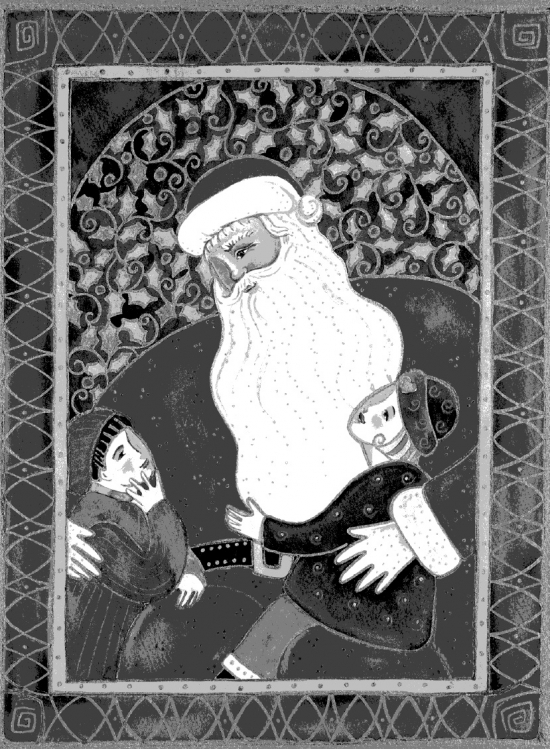Santa Claus: Clement C. Moore and St. Nicholas
Santa Claus: The Christ Child in America
Santa Claus: Belsnickel in America
Santa Claus: St. Nicholas in America
Santa Claus: Washington Irving and St. Nicholas
Santa Claus: More Confusion Over Names
Santa Claus: Thomas Nast and Santa Claus
Santa Claus: Nineteenth-Century Developments
Santa Claus: Promoting the Santa Claus Myth
Santa Claus: Twentieth-Century Developments
Clement C. Moore, a professor at New York’s General Theological Seminary, was a friend of Washington Irving’s. In 1822 he wrote a poem about St. Nicholas that was destined to shape the American image of Santa Claus. Titled “A Visit from St. Nicholas,” the poem begins with the familiar line, “‘Twas the night before Christmas.” Moore based the appearance of St. Nicholas partly on the image of him presented in Irving’s History and partly on a plump Dutch man who lived near Moore’s house. Moore’s St. Nicholas also bears some resemblance to Irving’s portrait of Wouter Van Twiller, the first governor of the New Netherlands colony in what is now New York.
Although the poem is about St. Nicholas, Moore shifted the traditional date of Nicholas’s visit from the eve of his own feast day to Christmas Eve. In this way Moore transformed the saint into a Christmas gift bringer. In addition, Moore’s poem promoted the European St. Nicholas’s Day custom of using stockings as convenient receptacles for gifts. Moore also retained the old European idea that St. Nicholas enters homes through the chimney, an idea some writers ultimately trace back to the belief that pagan deities spiraled downwards into homes on the smoke of hearth fires.
In spite of his reliance on Dutch folklore in portraying the image and activities of St. Nicholas, Moore eliminated Black Peter, St. Nicholas’s faithful companion in the Netherlands. According to Dutch tradition, Black Peter usually did the dirty work of climbing down the chimney and so acquired a grimy appearance. In Moore’s poem St. Nicholas himself descends the chimney and thus appears all “tarnished with ashes and soot.” Moore may also have been patterning this aspect of St. Nicholas’s appearance after Belsnickel, whom nineteenth-century German-American youth would impersonate by coating their faces and hands with soot.
Although Moore is sometimes credited with the invention of Santa’s flying reindeer, scholars note that the image actually appeared in a little-known children’s poem published a year before Moore wrote “A Visit from St. Nicholas.” Moore did, however, assign the reindeer the names by which we still know them today: Dasher, Dancer, Prancer, Vixen, Comet, Cupid, Donder, and Blitzen. Moore’s poem was first published under his own name in 1844.
